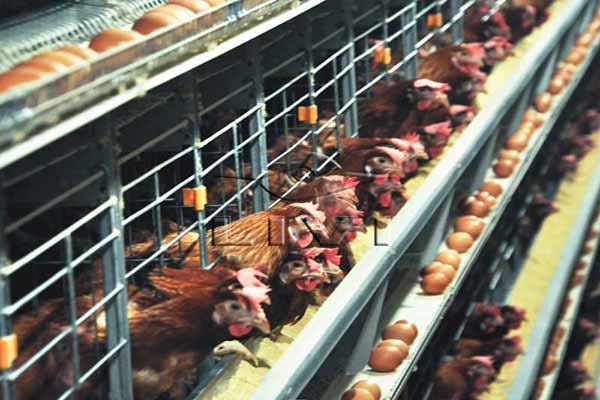How to Set the Lighting Time in Tanzania Chicken Farms
Time : 2025-06-25
In the dynamic and ever-evolving world of poultry farming, lighting plays a crucial role in ensuring the health, productivity, and overall well-being of chickens. Tanzania, with its vast agricultural landscape, is home to numerous chicken farms that rely on efficient lighting systems to maximize yield. This article delves into the intricacies of setting the lighting time in Tanzania chicken farms, providing a comprehensive guide for farmers to optimize their operations.
Introduction to Poultry Lighting
Poultry lighting is a strategic tool that simulates natural daylight to regulate the circadian rhythm of chickens. Proper lighting not only enhances egg production but also improves the general health of the birds. In Tanzania, where chicken farming is a major source of income for many, understanding how to manage lighting is essential for successful farming practices.
Importance of Lighting Time in Chicken Farms
The lighting schedule directly impacts the behavior, growth, and reproductive performance of chickens. Here are some key reasons why setting the lighting time correctly is vital:
– Growth Rate: A well-regulated lighting schedule can significantly influence the growth rate of chickens. The right balance of light and darkness stimulates growth hormones.
– Reproductive Performance: Chickens have a fixed lighting cycle that triggers the ovary to produce eggs. Inadequate lighting can lead to reduced fertility and production.
– Health: Light deprivation can cause stress and health issues in chickens. Proper lighting helps maintain a calm and healthy environment.
– Energy Efficiency: Optimizing the lighting schedule can also lead to energy savings, an important factor in cost-effective poultry farming.
Step-by-Step Guide to Setting Lighting Time in Tanzania Chicken Farms
1. Understanding the Chicken’s Circadian Rhythm
Before setting the lighting time, it’s essential to understand the circadian rhythm of chickens. Chickens are crepuscular, meaning they are most active during the twilight hours. Their natural lighting cycle is approximately 14-16 hours of daylight.
2. Assessing the Farm’s Specific Needs
Every chicken farm has unique requirements. Factors such as the breed of chickens, age, and the stage of production (growth or laying) should be considered. For example, chicks require a longer day length (up to 23 hours) to stimulate growth, while laying hens need a standard 14-16 hours of light per day.
3. Choosing the Right Lighting Equipment
Selecting the right lighting equipment is crucial. LED lighting is increasingly popular due to its energy efficiency and long lifespan. Here are some key points to consider:
– Wattage and Intensity: The wattage and intensity of the light should be sufficient to cover the entire flock without any dark spots.
– Color Temperature: Blue and white lights are most beneficial for poultry farming as they stimulate activity and egg production.
– Safety Features: Ensure the lighting system is safe, with a low risk of fire and electrical hazards.
4. Setting the Lighting Schedule
The lighting schedule should be adjusted based on the specific needs of the chickens. Here’s a general guideline:
– Chicks: For the first 8-10 weeks, chicks should be kept on a 23-hour light cycle. Gradually reduce the light to 18 hours over a week to acclimate them to a 16-hour cycle.
– Growing Chickens: Maintain a 16-hour light cycle for the next 4-6 weeks to ensure proper growth.
– Laying Hens: Once hens begin laying, adjust the lighting to a standard 14-16 hours per day.
5. Monitoring and Adjusting the Lighting Schedule
Regular monitoring of the chickens’ behavior and performance is essential. Adjust the lighting schedule as needed based on the following indicators:
– Egg Production: Monitor the number of eggs laid daily. If production is lower than expected, consider adjusting the lighting cycle.
– Bird Behavior: Observe the chickens’ activity levels. Excessive aggression or lethargy may indicate an imbalance in the lighting schedule.
Conclusion
Setting the lighting time in Tanzania chicken farms is a critical aspect of poultry farming that requires careful consideration. By understanding the chicken’s circadian rhythm, assessing specific farm needs, selecting the right lighting equipment, and monitoring the lighting schedule, farmers can optimize their operations for maximum productivity and profitability.
Additional Resources
– Tanzania Poultry Association: www.tanzaniapoultry.org
– FAO Poultry Guidelines: www.fao.org/3/a-i4245e.pdf
– LED Lighting for Poultry Farms: www.poultryhouselighting.com/led-poultry-farming












